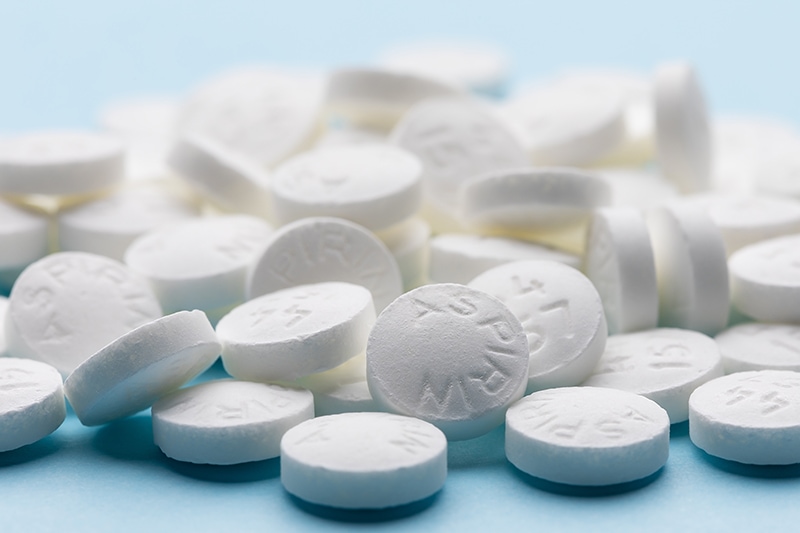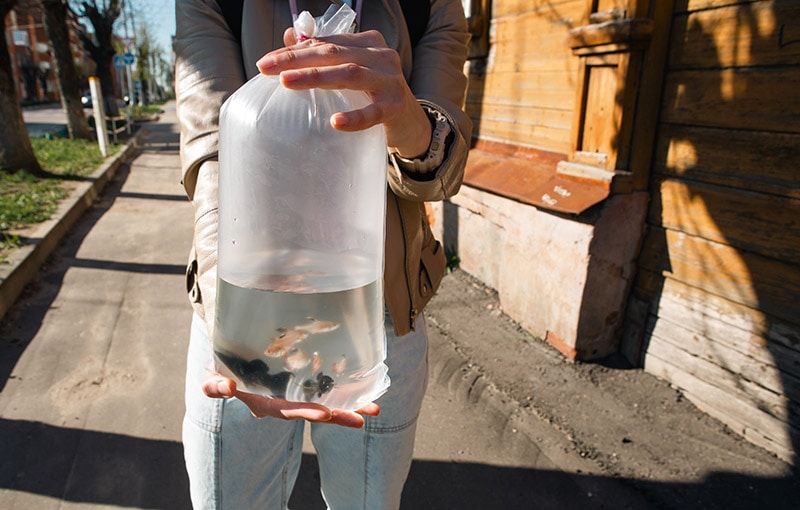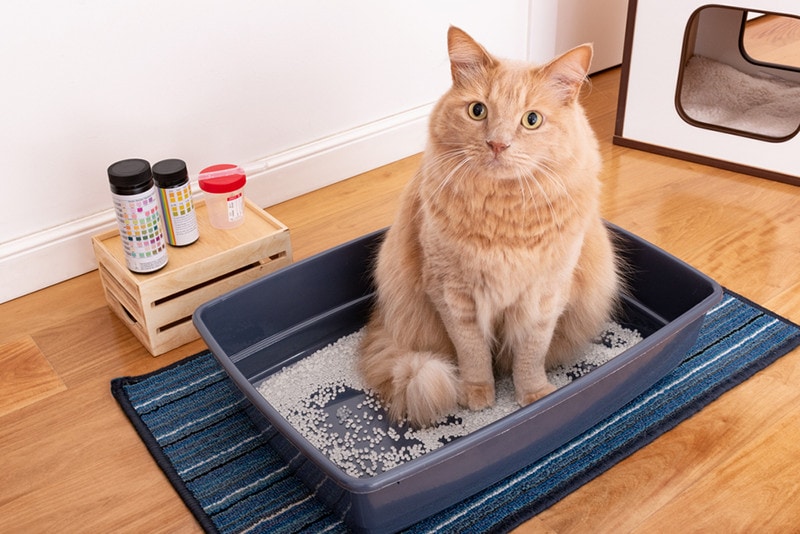Parvo in Dogs: Signs, Treatment, & Care (Vet Answer)
Updated on

One of the scariest things a puppy owner can hear is that their puppy has parvo. It’s a life-threatening illness that can be difficult and expensive to treat and leave caregivers feeling helpless.
To learn what you need to know about parvo so you can recognize it, care for a dog with it, and prevent it, read on because we’re here to help
What Is Parvo in Dogs?
Parvo is short for canine parvovirus type-2, or CPV. There are several forms of this virus in the world, with different regions having different types more commonly, but all the type-2 parvoviruses generally behave the same and create similar signs of illness, so we’re going to refer to them as a whole as parvo going forward.
Parvo attacks rapidly dividing cells, ones that need to turn over new cells constantly. The GI tract is a common example of this in a dog because it is exposed to things like stomach acid constantly. Because of this, parvo is generally associated with severe gastrointestinal diseases that can be life-threatening. Other rapidly dividing cells in a dog are bone marrow, lymphoid tissue (think lymph nodes), and myocardial (heart muscle) cells in puppies under six weeks old.
Parvo affects puppies under six months predominantly or any unvaccinated dogs of any age. It also persists in the environment for years in the right conditions, which can make it very common in certain areas and nearly impossible to remove. Parvo is considered present in ALL environments in the United States.

What Are the Signs of Parvo in Dogs?
Any puppy with vomiting or diarrhea is suspected of parvo. Here are some other common signs of parvo:
- Loss of appetite (especially full anorexia)
- Lethargy
- Bloody diarrhea with an awful smell
- Profuse vomiting
In severe cases, be aware of:
- Fever
- Extreme dehydration
- Low blood sugar levels (which can also lead to seizures),
- High heart and breathing rates
- Belly pain
- Loss of consciousness
- Loss of clotting ability
- Death
Parvo replicates within the rapidly dividing cells of a dog’s intestines, which can cause certain cells and layers to die and slough into their feces. This leads to an open tract between their fecal material and their bloodstream, which can cause sepsis–full body blood-borne infection and increases the risk of death.
Due to this, signs of parvo often progress quickly, and hospitalization, despite the severity, can be as little as 3–4 days or so as they’ll get very sick but then hopefully recover. Dogs with rapid onset and progression of the above signs are most suspicious for parvo.
Parvo infects lymphoid cells first, which then help it spread around the body, so subtle signs like lethargy or not finishing a meal are often early signs, with more severe signs occurring hours to a day later.
What Are the Causes of Parvo in Dogs?
Parvo is shed in the feces of infected dogs. Breathing or swallowing virus particles that have been shed causes infection in a new dog.
Since parvo is a virus, which is very small, and because it lives in the environment for a long time and is hard to kill (many disinfectants do not kill parvo), the spread of parvo via something called fomites is a common source of transmission.
Fomites are simply anything that can carry an infectious agent around, so they can be parvo on dirt, tracked by a dog’s paws, soiled bedding or toys, etc.
Female dogs, especially those vaccinated against parvo, carry antibodies that protect them from parvo, which they share with their puppies via colostrum, the first milk they nurse immediately after birth. Those antibodies, unfortunately, provide less protection from parvo every day. Puppies (or adult dogs) exposed to parvo while not adequately protected can become ill.
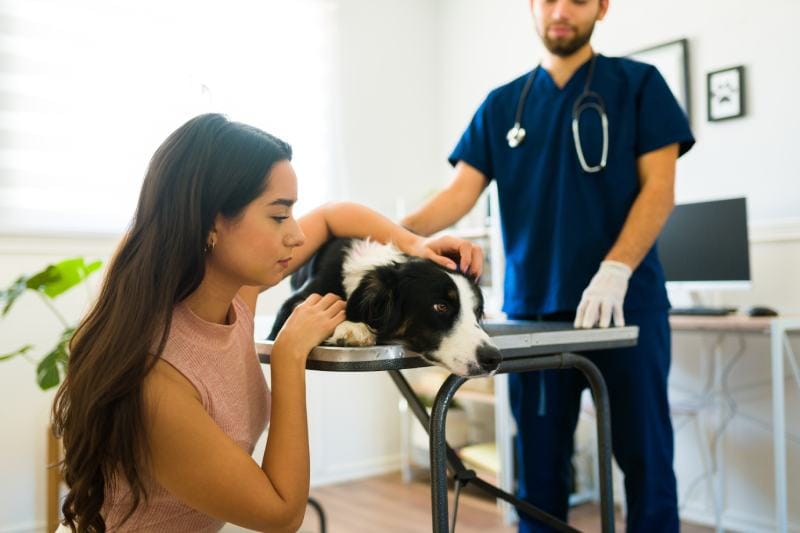
How Is Parvo Diagnosed in Dogs?
In most cases, parvo is diagnosed in a veterinary clinic using a tableside test, known as a fecal ELISA antigen test, or more commonly referred to simply as a parvo test. A swab is used to collect a fecal and sometimes a saliva sample for the test.
If a parvo test is positive, you can be confident the dog does, in fact, have parvo, but if the test is negative, that unfortunately doesn’t mean we know that for sure. False negatives are a known problem very early in the disease or very late, and extreme diarrhea, blood, and intestinal lining shedding can cause dilution of the virus in the sample at certain times leading to false negatives. Some dogs may need to pursue treatment for parvo until proven otherwise and undergo daily tests.
There is another, less common, but more accurate parvo test that can be used when there is time or in dogs suspected to have the disease, but that is reading as negative on the screening tests at the veterinary clinic. This test, a parvovirus PCR assay, is less likely to have false negatives, making it useful for negative antigen test dogs. The increased cost and need to send a sample to the lab for testing, which slows down results, paired with the high accuracy of positive antigen parvo tests, is why this test isn’t the first line of diagnosis.
Some dogs may need other diagnostics, such as abdominal X-rays or ultrasounds, to rule out other causes of GI signs. Puppies with parvo are at risk of developing something known as an intussusception which is when the intestines start to fold into each other and can significantly worsen their signs, may need surgery to correct, and would be diagnosed with an abdominal ultrasound.
All parvo dogs also require bloodwork, often daily, if possible, to track their white blood cell, red blood cell, platelet counts, blood sugar levels, and electrolytes, as these can all be severely affected throughout the disease.
How Is Parvo Treated in Dogs?
There is no effective direct treatment against parvovirus itself. While there are some options, such as antiviral medications, none have proven effective against parvo.
Instead, treatment for parvo is mostly supportive. The plan is to maintain their hydration, prevent vomiting, keep them eating or otherwise provide nutrition, correct any electrolyte imbalances, maintain the blood sugar levels, replace red blood cells with a blood transfusion if needed, control pain, and prevent or treat infections at their intestinal lining that can lead to sepsis.
The best chance for survival is the hospitalization of any dog with parvo. Here they can receive IV fluid therapy optimized to maintain hydration even if they aren’t eating or drinking and are losing fluids in vomit and diarrhea. These fluids can also be used to maintain or correct electrolyte levels and provide sugar to maintain blood sugar levels.
Since the GI tract is affected, that makes GI absorption of medications difficult for the sick dog, so IV anti-nausea medication, antibiotics, and pain medication are preferred.
Some dogs require feeding tubes to maintain nutrition and blood sugar levels.
Not all regions have veterinary clinics that can hospitalize a dog, and not all owners can afford to hospitalize their dogs. Treatment at home can be given, consisting of subcutaneous fluid therapy, oral sugar and electrolytes, oral antibiotics, oral anti-vomiting medication, and syringe feeding. The prognosis for dogs receiving at-home or out-patient treatment is worse than those receiving in-hospital treatment but is still relatively good.
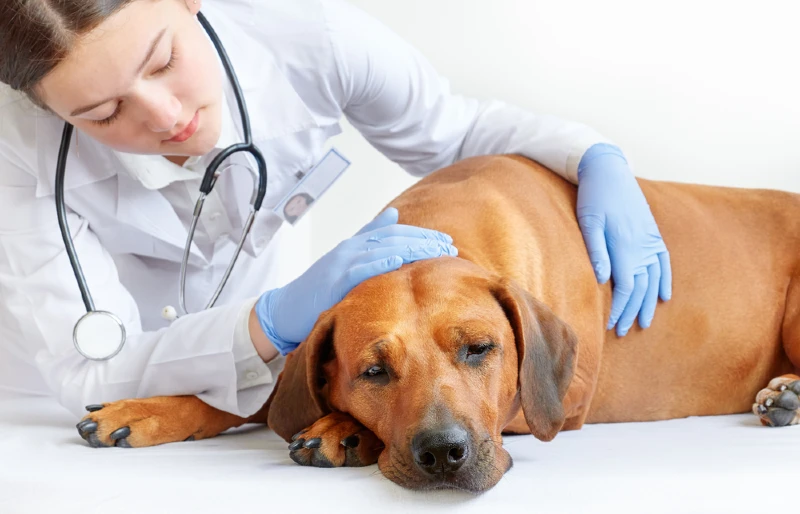
How Do I Care for a Dog With Parvo?
The best way to care for a dog with parvo is to attempt to prevent it in the first place. Dogs who have not completed their parvo vaccine series, which is given every 2–4 weeks from about age 6 weeks to 16 weeks can get parvo. This means even if they aren’t behind on their vaccine schedule, if they aren’t 16 weeks old yet, they can still get parvo and it can still be deadly.
Dogs unvaccinated for parvo or puppies that haven’t completed their series should not touch ground in public spaces or interact with other dogs until they are fully vaccinated, with the series completed. This does include walking on the sidewalk in your local neighborhood and is a reason not to attend puppy classes or daycare until vaccination is complete also.
If your dog shows signs of parvo, they need to see a veterinarian immediately for a parvo test due to the fast progression of the disease.
If you need to care for a dog with parvo at home, speak in depth with your veterinarian about how to do so. They will supply you with everything you need and outline everything to watch for that indicates the dog is getting better or worse. Careful attention to keeping them hydrated and maintaining their blood sugar levels is critical, which may mean several sleepless nights.
All areas a dog with parvo has been, and especially anywhere they release fecal matter, must be thoroughly and immediately cleaned. Consider all organic material garbage, as it is nearly impossible to properly disinfect these items. Yards are nearly impossible to disinfect, as are couches and carpets, and it is instead advisable not to bring a puppy into a household that has had a parvo case for several years.
The only readily available commercial cleaner that can kill parvo is bleach, which should be used at a 1-part bleach to 32-part water ratio. Bleach can ruin certain fabrics and surfaces and has a strong smell, and this contributes to what makes it so hard to properly disinfect a house, especially a yard, of parvo. The bleach must also remain on the surface for 10 minutes before being rinsed, and that includes staying visibly soaked, so reapplication throughout the ten minutes may be needed.
Frequently Asked Questions (FAQs)
Is parvo deadly?
Parvo can be deadly, especially without treatment. Survival rates for parvo with hospitalization treatment are about 90% and about 70–80% for home treatment.
Can I get parvo from my puppy?
Luckily, parvo is mostly species-specific. Canine parvovirus can infect other canids like wolves and foxes but cannot infect people. Originally in rare cases, unfortunately, more common in a new form of CPV that is now the second most common type of parvo in the United States, CPV can infect cats.
What are the first signs of parvo in a dog?
Lethargy, loss of appetite, vomiting, or diarrhea are often the first signs of parvo in dogs.

What does parvo poop look like?
Usually, parvo poop is watery diarrhea that may be brownish, reddish, or black. It often has a distinct and strong smell, and you may see evidence of shedding intestinal lining in the poop.
What can be mistaken for parvo in dogs?
Intestinal parasites (worms, coccidia, giardia), GI foreign body obstructions, intussusception, and some toxins can have similar signs to parvo.
Conclusion
Parvo is a serious and scary disease, but with proper and timely treatment, it does have a high survival rate. It is best to hospitalize a dog with parvo, but there is still hope for dogs when that isn’t an option, which is not uncommon in many areas of the country. This highly contagious GI disease causes extreme vomiting and diarrhea and can lead to sepsis, shock, and death, but it can be treated with supportive care and antibiotics.
If you ever suspect your dog has parvo, especially a puppy, it is best to bring them directly to a veterinarian for testing. While parvo is just about everywhere, taking preventative measures like limiting the risk of exposure and staying on the recommended vaccine schedule are highly recommended due to the severe and expensive nature of the disease.
See Also:
- Can Humans Get Parvovirus From Dogs? Vet Reviewed Facts & FAQs
- Uveitis in Dogs: Signs, Causes & Treatments (Vet Answer)
Featured Image Credit: Zozz_, Pixabay




